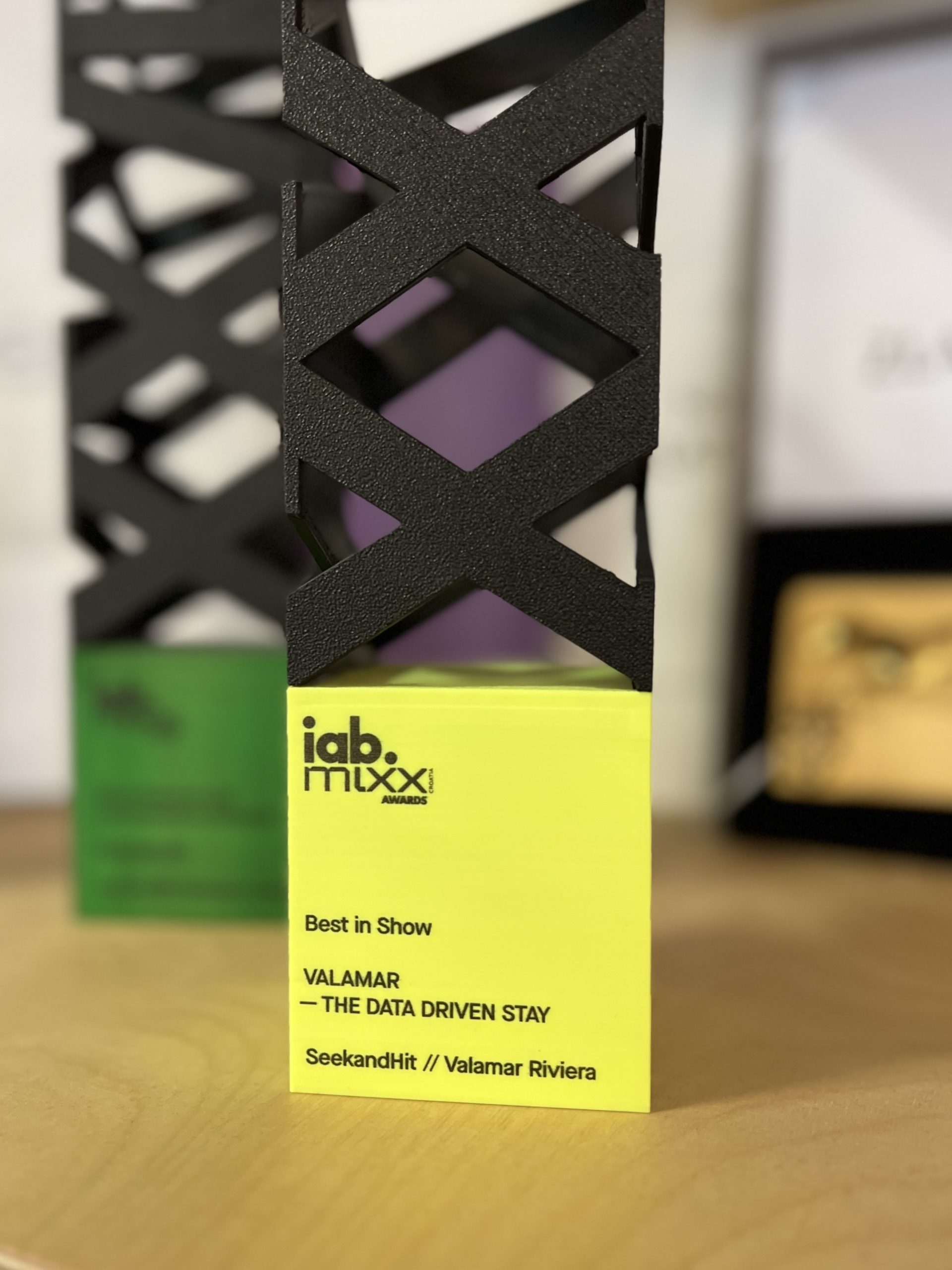Are you tired of guessing which pages your visitors will visit next? You want your visitors to tell you what they want? Why don’t they convert? Well, have no fear, because Google Analytics 4 (GA4) is here to save the day with its magical predictive powers!
Whaaaat?
Yes! You read it right. GA4 could predict the behavior of your users. No more guessing and wondering because GA4’s machine learning algorithms have got you covered.
But how? And what are predictive metrics anyway?
GA4 utilizes Machine Learning to collect and analyze data on your users. The analysis results help predict future purchasing behavior – and give us predictive metrics.
To put it simply, predictive metrics try to predict the future behavior of your users. You can learn more about your customers just by collecting structured event data.
If you are thinking: “Tell me more!”, you came to the right place!
What are predictive metrics and what are they based on?
Predictive metrics help us identify users and their actions on site that will likely lead to a purchase or conversion. For example, you can discover more users who are likely to purchase the product in the next 7 days. It can go both ways: these metrics can also help you identify those users who have a low probability of purchasing.
Predictions are based on:
the data of your site visitors
structured event data that is added and Google’s machine learning algorithms.
This combination generates predictions about the (non) purchase behavior of your users.
For example, it can predict metrics such as conversion rate, revenue, and customer lifetime value.
It is important to know that predictive metrics are based on historical data, and will improve as more data is collected.
There are currently three predictive metrics in GA4:
Purchase probability
Shows the level of probability that a user who was active in the last 28 days will trigger a purchase or any other specific conversion event in the next 7 days**. For example, if you have an e-commerce website, you can use this metric to predict the users who are most likely to purchase and target them with specific ads.
Predicted revenue
The revenue expected from all purchase conversions within the next 28 days from a user who was active in the last 28 days**. For example, if you have an e-commerce website, you can use this metric to predict the total revenue for the next month.
Churn probability
The opposite. Level of probability that the user who was active on your web within the last 7 days will not be active in the next 7 days. For example, if your main goal is subscriptions, you can use this metric to predict which customers are most likely to cancel their subscription in the next week.
** At the moment, only purchase, ecommerce_purchase and in_app_purchase events are supported in GA4 for Purchase probability and Revenue predictions metrics.
Good to know: Although GA4 continues to process ecommerce_purchase event, Google recommends using the purchase event instead, for now.
For a better understanding of predictive metrics, past and future, let’s take a look at this table which aims to explain time retention and predictions for predictive metrics:
What we can conclude from this table is that all of the predictive metrics are meant for the near future and based on the recent past. Also, they are all pretty much related to making money. (Oh no! What a shame! 😂)
What do you need to set up to use predictive metrics?
Have a GA4 property
Not to be the one bringing up the elephant in the room, but first you actually need to have GA4 installed on your site. There are plenty of more reasons why you should have GA4 on site, but we will leave that for some other article.
Tips and tricks: Once you have A GA4 property set up, don’t forget to enable benchmarking data sharing. This will lead anonymous data to the predictive metrics learning model and, as a final result – improve the quality of predictions for your users. If you need help with this, it is very easy: just enable it in the Admin tab on Account Settings.
Track purchase events
As mentioned before, you have to configure these three events:
purchase
ecommerce_purchase
in_app_purchase.
Tips, tips, tips: You should use as many events related to user behavior. AI will get a better insight into what visitors are doing (or not doing) on your site. Also, it would be good to limit the events unrelated to user actions on site because they could mess with the head of the predictive learning models (nobody is perfect).
Patience
Predictive models need visits from at least 2000 users. Half of them need to have triggered a predictive condition, e.g. made a purchase. The other half of them, must have not triggered a predictive condition, e.g. made some actions and did not make a purchase.
This applies to all predictive metrics. Also, model quality must be sustained over a period of time, which is generally 28 days.
Important to know: Predictive metrics will be generated for each active user once per day. In case that any of these conditions are not satisfied, GA4 will stop updating the predictive metrics and they will be unavailable.
You can check the status each day. It will be displayed as “ready to use” or “not eligible to use”. You can find them in the Explore tab → Segments and then under Suggested segments:
Enough of the technical stuff. Let’s take a look at one practical example to help you understand this better. Or in other words, the example I wanted to find when I was learning about Predictive metrics.
In this example, we will use the purchase probability metric.
You have a website that sells cosmetics products and you want to know which visitors are most likely to buy your product in the next 7 days. So, you remember that you read some pretty cool article which says that you can use predictive metrics for that purpose. Okay, now what?
You remember that you can use a purchase probability prediction that analyzes historical data such as browsing behavior, purchase history, and demographic information, and uses machine learning to predict which visitors are most likely to make a purchase.
Noice! Once you have the data, you can use them to make segments of users who are likely to make a purchase. For example, you now know which countries they are coming from and what they are most likely to search for. Great! Now you can target them with some personalized ads.
But what about the users who don’t make it to purchase? Hmm, maybe you should optimize the checkout process?
There is another example of how to use this metric. By identifying users with a low purchase probability, you can analyze their behavior on your website to identify any friction points in the checkout process that may be preventing them from completing a purchase.
It is important to know that none of these metrics can 100% guarantee that you will actually have those purchases, but it can be a really good starting point and help you understand your customers better. It is also very interesting to use these metrics for tests and then analyze if they really performed the way GA4 “said they will”.
If you need a little motivation to learn more about predictive metrics, open your GA4 property and go to the Explore tab. Make yourself a report and add segments. Then, for conditions, choose “predictive” and let the games begin. 🙂
In case it sounds too easy (which always turns out not to be when you actually want to use it), or you are just insecure about it, I will show you what it should look like:
First give your report a name (so that you don’t lose it in multiple Untitled exploration reports), choose the date range and click on “add segment” plus sign:
To begin with, let’s use suggested segments and try Likely 7-days purchasers. After you master it, you can create custom segments and use predictive metrics as well.
Then, make a condition you are interested in. Here you can choose between in_app_purchases and purchases, but as mentioned before, let’s stick to purchases. We want to analyze the users who are most likely to purchase in the next 7 days.
In the end, choose the dimensions and values. In other words, the information you want to know about your potential users. Here we have chosen the device type and browser. So, in this report you can see that the users who are most likely to purchase in the next 7 days are using Chrome browser and desktop devices. This is just an example of how you can use these metrics in GA4 and it could be used as an idea or starting point to explore more about your users and their behavior. All of this data can give you a better insight, which can be used for forming audiences in marketing campaigns.
Conclusion
In conclusion, Predictive Metrics in GA4 are a game-changer and you should all use them. Thank you for your attention, bye!
Just kidding, but by using machine learning to predict future performance, businesses can make data-driven decisions that lead to increased conversions, revenue, and customer lifetime value.
If nothing else, they are a nice touch to make marketing strategies and optimisation a little bit more interesting (not that they are not interesting already 😉). To be honest, who doesn’t want to be able to predict the future? Give yourself a chance to at least try it.
As I said before, nobody is perfect, so neither are predictive metrics. Therefore, it is important to know that you shouldn’t rely solely on them. We still need humans, right? So it’s important to continuously monitor and evaluate the predictions against actual results to fine-tune the models.
To avoid being boring as a YouTube ad that is constantly saying “Switch to GA4 and use predictive metrics” in the middle of your favorite song or podcast, I will let all of this just sink in for you and hope you will enjoy this new feature half as much as I do.







